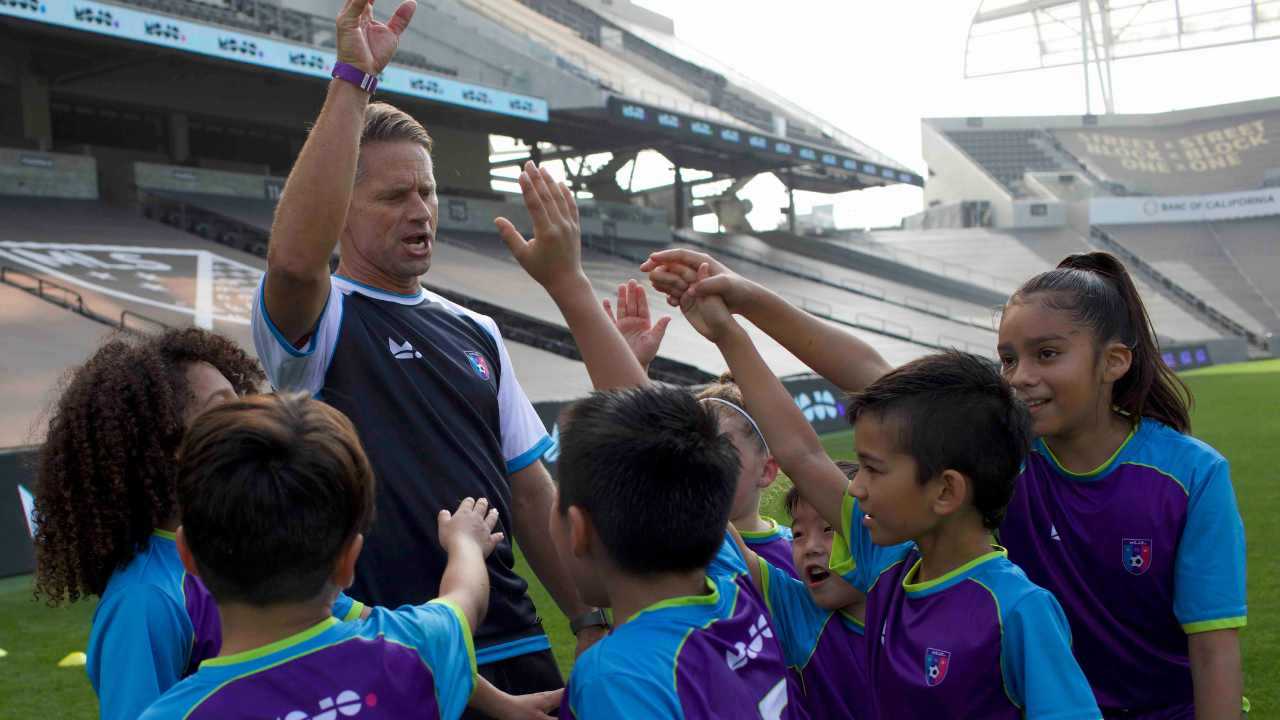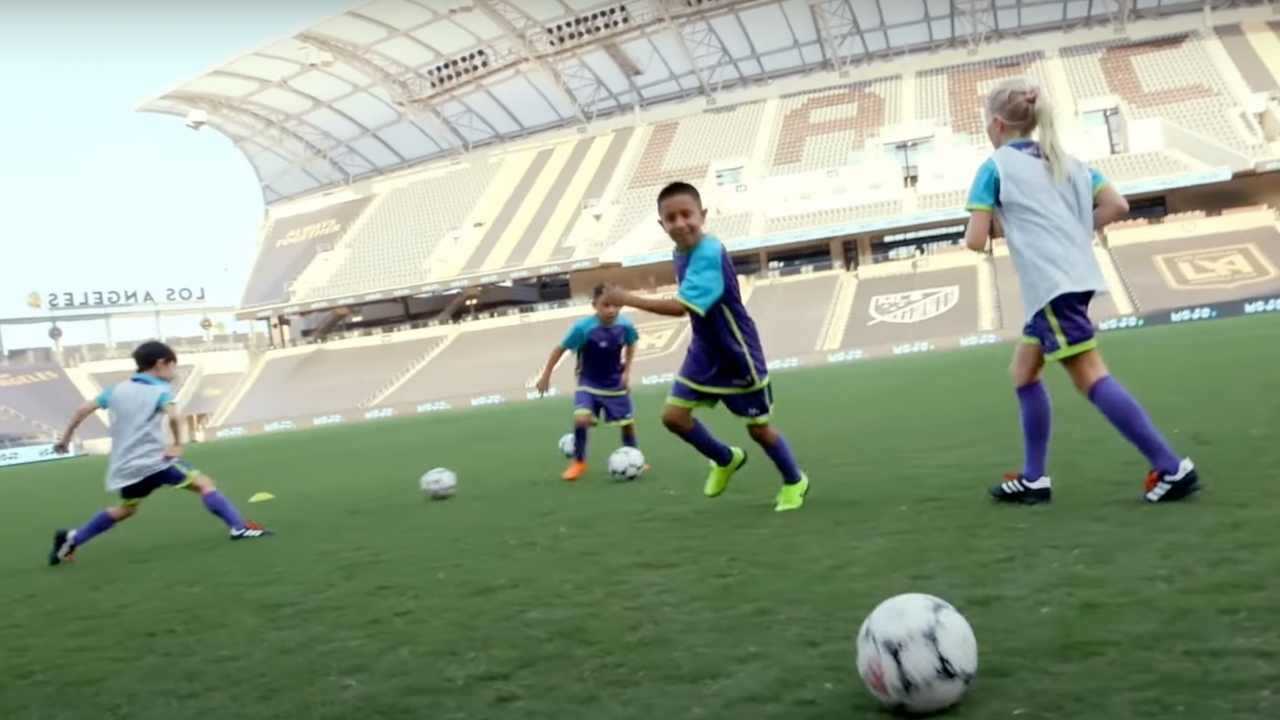The Right Way to Warm Up in Youth Soccer
Could the best way to warm up for soccer practice be… not really warming up at all?
George Perry
| 4 min read

Canva
The purpose of a warm-up in any sport is to prepare players for what they are about to do in a training session or game. Since soccer has a bit of everything — running, jumping, twisting, kicking, cutting … even a bit of throwing — the warm-up should include a bit of everything, too. Which means that playing soccer is actually a great warm-up for playing soccer — especially for younger players.
Tom Condone, director of sport and member development at US Youth Soccer, explains.
What kids actually need
Children age 10 and under are already fairly elastic, and they live their lives in a wide range of motion, says Condone. Warm-ups for young players should be active, where everybody is involved and having fun. There is really no need to “static stretch” before a game.
What’s more, sports science research in the last 20 years has shown that static stretching — the “grab your leg and hold for 10 seconds” style from gym class — before a practice or game decreases athletic performance and it doesn’t help them avoid injury, says Condone.
If coaches or parents are concerned about range of motion or flexibility they should try dynamic stretching, which is a movement-based type of stretching for their warm-up routine.
Dynamic stretching FTW
Dynamic stretching uses the body’s full range of motion, and mimics the motions of the activity you’re about to do. The best dynamic stretching for young soccer players includes a few touches as well.
For players of all ages, practicing the core movements of soccer — running, cutting, connecting with the ball — is all they really need to wake up their muscles and joints.
3 great warmup games for young players
The youngest kids don’t even need to start a session with dynamic warmups. In fact, they’re best served when using a simple, time-tested game to get their bodies moving.
Red Light, Green Light
In this schoolyard favorite, players build muscle memory by pairing quick stops and explosive speed.
Sharks and Minnows
A classic, where dribbling players pretend to be minnows who must cross an ocean full of hungry sharks.
Hospital Tag
This fun variation of tag helps players develop balance and coordination.
Let them play
Similarly, in a lot of youth soccer sessions today, play is the warmup. That’s part of the idea behind US Youth Soccer’s Play-Practice-Play model for training session design. When young players show up, the first thing they do is hop into a small-sided game. As players arrive they can play 2 v 1 games that then become 2 v 2, until a few more players show up and now you have a 3 v 2 game and a 3 v 3 game, and so on.
This brings the players right into the action. And it also gives the coach an early win.
“Focus players’ attention immediately by getting them active through intentional free play,” says Condone. “It prepares the body to perform the skills required for practice, and provides the coach an opportunity to observe the players’ behaviors on the goal of the training session.”
A new way of thinking
There was a time when play was the treat at the end of soccer practice. But as we learn more about how kids develop and learn, play is increasingly the whole point. So, even though sessions that are “Play-Practice-Play” instead of the old-school “Warmup-Drills-Scrimmage-Laps” might look and feel a lot different from anything you grew up with, there’s actually a method to the madness. Play keeps the focus on what you’re really out there to do: educate players about soccer in a way they truly enjoy.
Plus, it’s fun.





